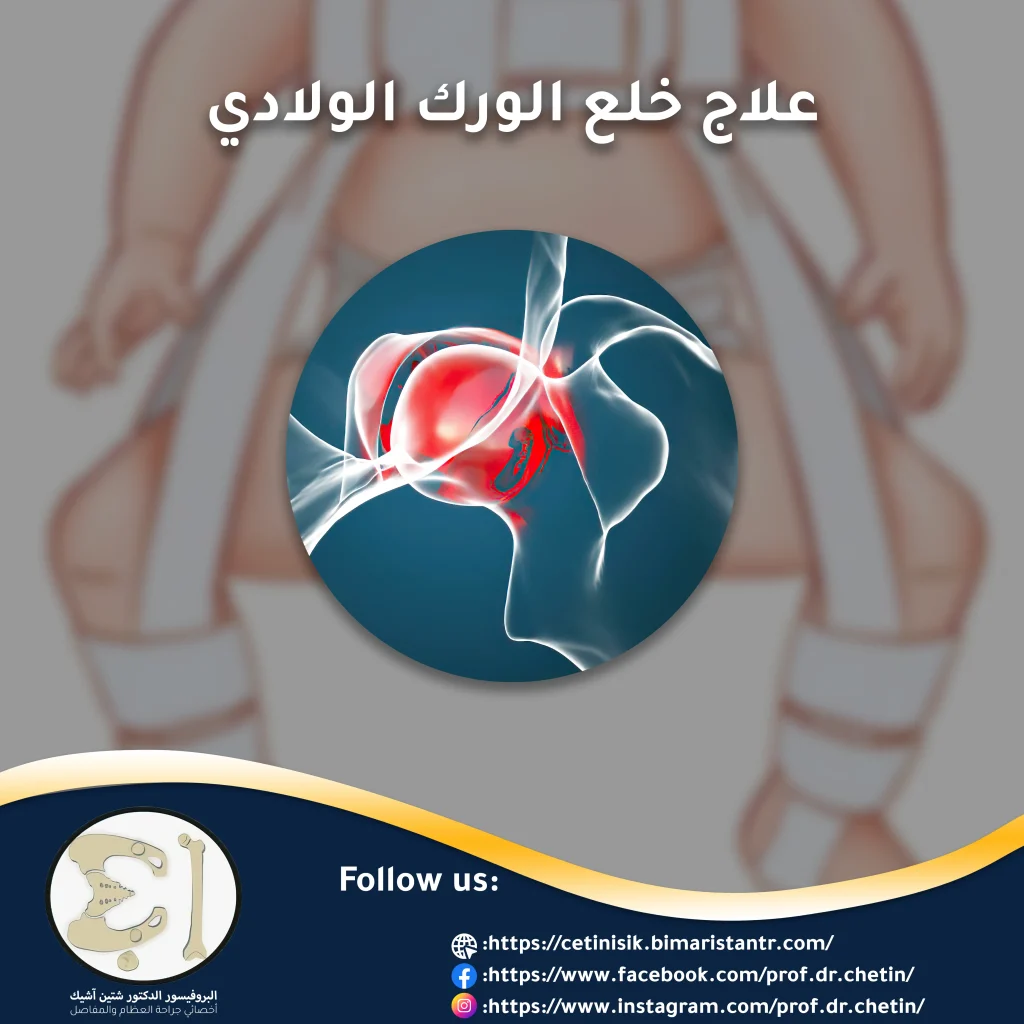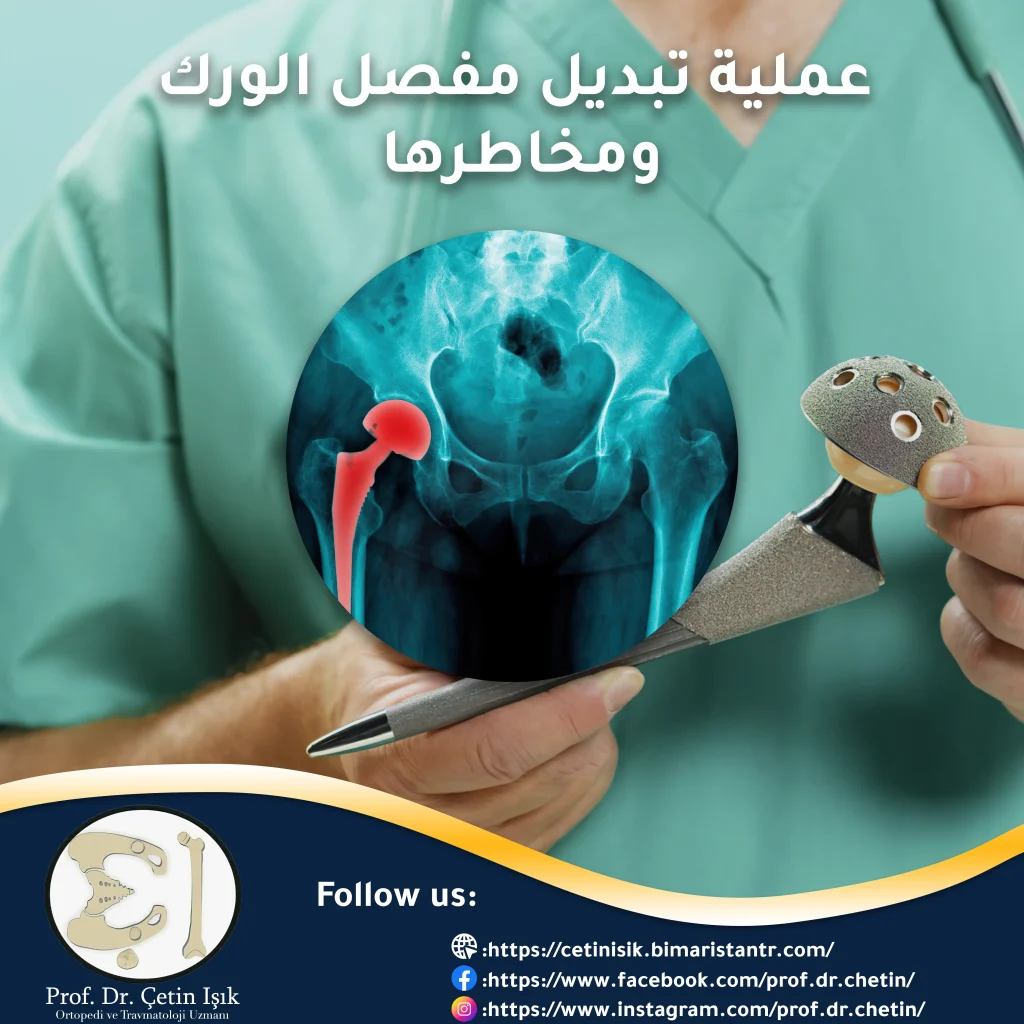The fracture of the neck of the femur is called the fracture of death due to the many complications that occur in it, and it is one of the common fractures, especially in the elderly, so caution must be exercised in its diagnosis and treatment.
The neck of the femur is located under the head of the femur and between the two trochanters (the greater and lesser trochanter) within the thigh joint, i.e. the neck of the femur is located inside the intracapsular capsule within the acetabular cavity, so the fracture of the neck of the femur can be considered as an intracapsular or Hip fractures hip joint fracture, in this article we will learn about how to diagnose and deal with this type of fracture.

Profile of femoral neck fracture
Fractures of the neck of the femur femoral neck fracture Caucasians are more than Africans, and women suffer more than men from this fracture, especially after menopause due to the increased possibility of weakening the bone structure at these ages.
The mortality rate for femoral neck fracture in the UK ranges from 20% to 35% within a year after femoral neck fracture.
Elderly people between the ages of 60 and 70 are more likely to fracture the upper end of the thigh (fractures of the neck of the femur) after a minor bump or fall to the side.
This fracture is more common in the elderly due to their injury osteoporosis or thinning of their bone density, and it can happen in less cases in young people and children if they have bone problems (eg bone tumor Or fragility or muscular dystrophy...) or after suffering a severe injury (such as a traffic accident or a fall from a great height).
Classification of femoral neck fracture
Classified Neck fracture of the femur According to two levels:
according to the level of fracture
- fracture just below the head
- Fracture in the mid-neck of the femur
- Basilar fracture (fracture of the base of the femoral neck)
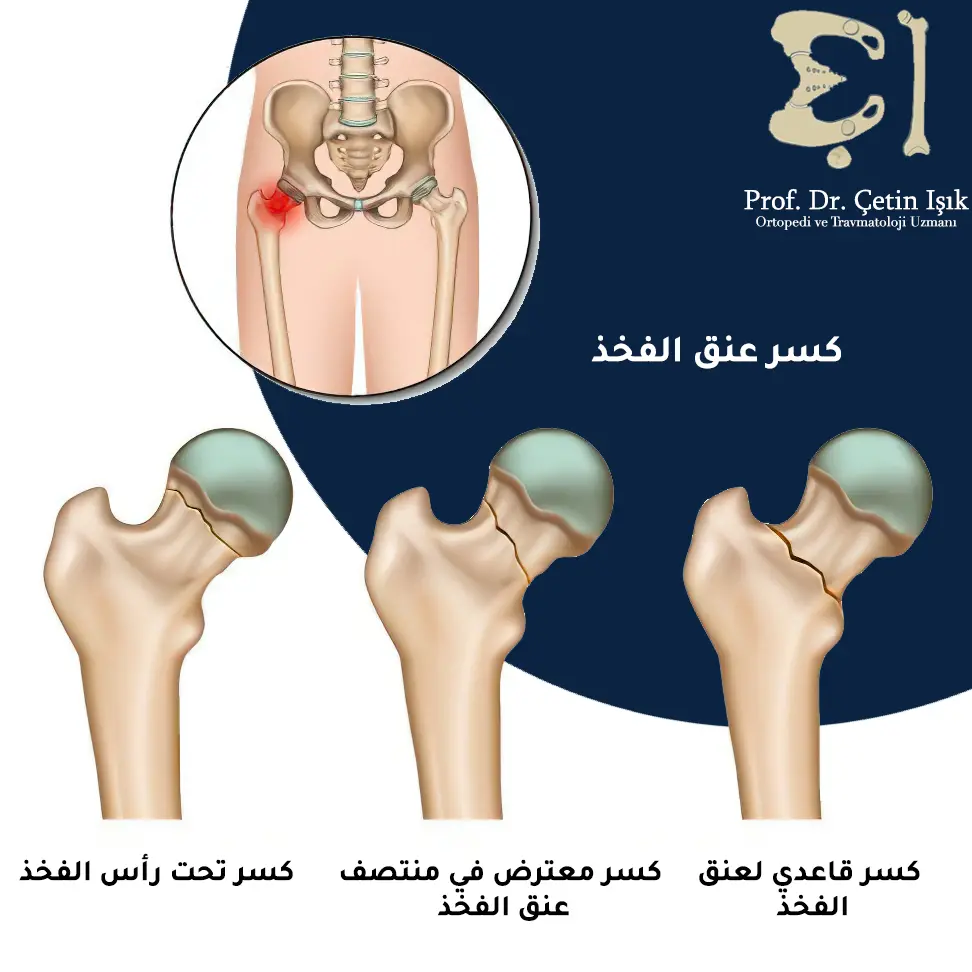
according to the degree of change
- Grade 1: Fracture of part of the neck
- Grade 2: complete fracture of the neck without deformation
- Grade 3: complete fracture of the neck with mild dislocation
- Grade 4: complete fracture of the neck with severe dislocation
The blood supply to the femoral neck is affected by the fracture site. The closer the injury to the head of the femur, the more severe the bleeding.
Symptoms of a femoral neck fracture
Symptoms include the appearance of one of the following signs:
- Severe pain in the hip area with the upper thigh bone area
- The patient cannot get up after the injury and fracture
- Inability to walk or lift the affected limb (can only bend the knee)
- Shortness of the injured limb in case the fracture is variable
- Lateral rotation of the affected limb may occur
Complications and complications of femoral neck fracture
The emergence of one of the following conditions indicates the occurrence of complications, including complications of femur neck fracture:
- Dry grunt that can occur due to an error during surgery or poor fixation, and can occur after the fracture has healed.
- Prolonged lying due to a fracture can predispose to an embolus or a urinary tract infection and pneumonia.
- Lack of healing: It occurs due to a lack of good fixation.
- degenerative disease (Osteoarthritis).
Diagnosis of a femoral neck fracture
It is very important to make an early diagnosis of this type of bone fracture and find an accurate classification to provide appropriate treatment.
Clinical examination
An examination carried out by a doctor specializing in orthopedic surgery, in which he examines the general condition of the patient and then makes sure of the integrity of the bones and other joints in the body. The patient’s clinical history is also taken and the question about his antecedents and activities, and the presence of accompanying diseases, is then examined. The movement of the joints in which the patient feels pain ( hip joint) and muscle strength in this area is tested.
radiography
- X-ray: Anterior image is best for determining the fracture pattern.
- Computed tomography CT: It is useful in determining the occurrence of change and the degree of fragmentation.
- Magnetic resonance MRI: It is useful if the fracture does not appear on x-rays, but it is not useful in assessing the viability of the head of the fractured femur.
- Bone Scan: Reports like magnetic resonance imaging.
Treatment of a femoral neck fracture
The treatment varies according to the location and severity of the fractures, in addition to the types of fractures that occurred, as it includes:
Conservative treatment
It is rare for femoral neck fractures to heal with this type of treatment. It includes rest and lying down for one to two months. Conservative treatment is limited to the following cases:
- in children; This is in the case of unchanged fractures.
- In the event that there is a contraindication to surgery (as in the case of the elderly who cannot bear surgery).
Medical therapy
As in all bone fractures, the resulting pain must be dealt with. Paracetamol or non-steroidal anti-inflammatory drugs (NSAIDs) can be given, and in the absence of benefit, an opioid drug can be used.
Surgical treatment
Fracture of the femoral neck is one of the emergency operations that must be performed within 24 hours to avoid death or necrosis of the head of the femur, and it includes:
internal fixation
It is done by installing screws in the hip joint, and it requires great experience and skill from the practicing doctor. It uses metal screws in the form of screws to fix the metal plates between the body and the head of the femur, and it is not performed in the case of late injuries.
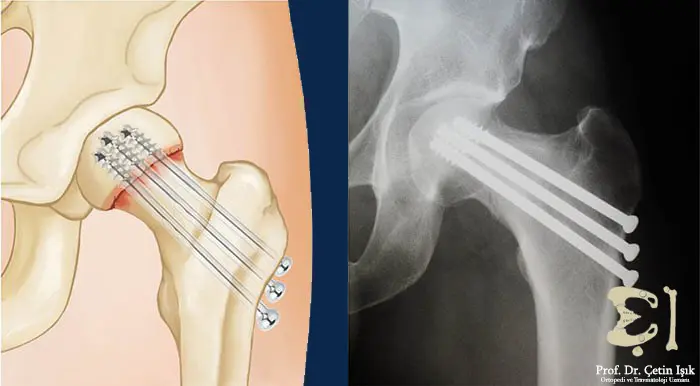
Femoral head replacement
It is indicated Hip replacement In altered bone fractures and in the elderly, it has two types:
- Implantation of a partial artificial joint: in the case of mild injuries and in the elderly.
- Total joint implantation: at younger ages or severe damage.
In Türkiye, a modern technique for hip replacement is available: Robotic hip replacement.
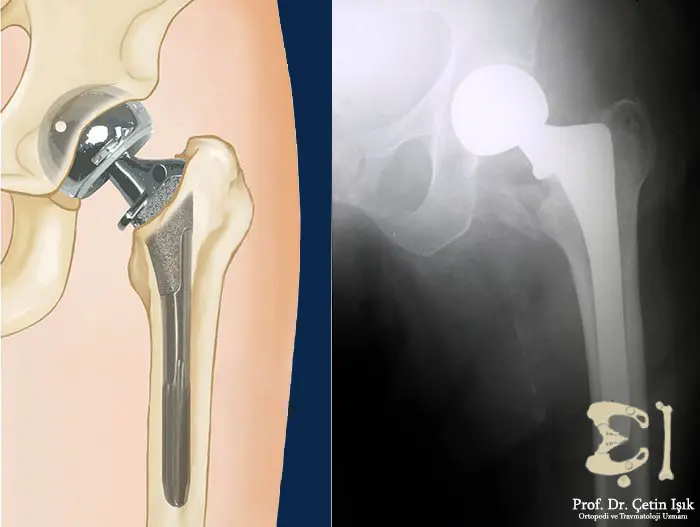
Physical rehabilitation
Includes exercises to strengthen the muscles due to the long period of lying down andMuscle stiffness The result.
Prevention of femoral neck fracture
Elderly people can avoid this type of fracture by taking the following instructions:
- exercising regularly and walking every day; This helps increase the flow of blood and oxygen to tissues including bones and muscles.
- Eat foods that contain Vitamin D Or exposure to the sun or taking vitamin D medications in case this is not possible.
- Patient education plays an important role in avoiding a new infection.
- Pay attention to the elderly and protect them from falling by designing special clothes that prevent bone fractures, and the presence of an escort in case the elderly suffers from difficulty walking.
Finally, fractures of the neck of the femur indicate the presence of a fracture next to the femoral head in the neck between the head and the greater trochanter, which could lead to an impact on the perfusion of the femoral head, and the occurrence of death in it. Therefore, a diagnosis must be made as quickly as possible to ensure an effective treatment for this condition.
Sources:
Common questions
Fracture of the femur is one of the serious fractures, so it must be dealt with quickly due to the profuse bleeding that accompanies this pattern. Femoral neck fractures are relatively rare fractures, but they are very dangerous types due to dry necrosis and lack of fusion as major complications that lead to the death of the patient if treatment is neglected. Elderly people are among the most at risk groups.
The length of the recovery period depends on the type and location of the fracture. On average, full recovery takes 1 to 4 months after femoral neck surgery, but the injured person may not return to his former condition.
Severe pain associated with fractures of the neck of the femur causes the patient to stay for a long time in the hospital, which results in the risk of many complications and complications.
In the event that the patient is able to move, physical rehabilitation exercises can be started during the first week of the injury (after 5 to 10 days).



